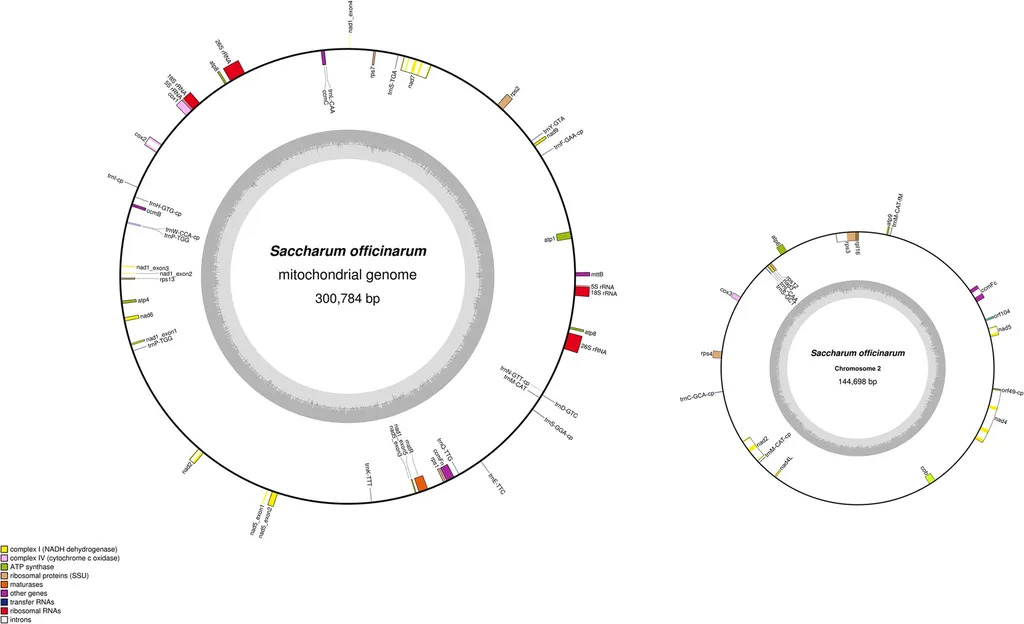In a groundbreaking study published in the *Journal of Integrative Agriculture* (translated as *综合农业杂志*), researchers have unveiled the intricate mitochondrial genomes of sugarcane and its wild relatives, offering a glimpse into the genetic complexity that underpins one of the world’s most vital energy crops. Led by Guilong Lu of the School of Horticulture and Landscape Architecture at the Henan Institute of Science and Technology and the State Key Laboratory of Tropical Crop Breeding, the research not only sheds light on the evolutionary history of the Saccharum complex but also paves the way for advancements in germplasm classification and breeding programs.
Sugarcane, a hybrid of Saccharum species, is a cornerstone of the global sugar and bioenergy industries. Yet, despite its economic importance, the mitochondrial genomes of sugarcane and its relatives have remained largely unexplored until now. Lu and his team have filled this knowledge gap by assembling the mitogenomes of one S. arundinaceum, one S. spontaneum, and five sugarcane cultivars. Their findings reveal a surprising diversity in mitochondrial structure and content, with genomes ranging from 445,578 to 533,662 base pairs and encoding 33 protein-coding genes.
One of the most striking discoveries is the varied chromosomal configurations among the species. “The primary structures of S. arundinaceum consisted of three small rings, while S. spontaneum exhibited one ring and one linear structure, and sugarcane displayed two rings,” Lu explained. These configurations, driven by repeat-mediated recombination, suggest a dynamic evolutionary history marked by genomic reorganization and gene transfer events.
The study also identified a novel intron marker, SAnad4i3, which holds promise for species differentiation. This marker could streamline germplasm classification, a critical step in breeding programs aimed at enhancing sugarcane’s yield and resilience. Additionally, the researchers uncovered between 540 and 581 C to U RNA editing sites in the protein-coding genes, with several sites linked to the creation of start or stop codons. These edits play a pivotal role in gene expression and could influence the plant’s growth, fertility, and adaptation to environmental stresses.
Perhaps most intriguing is the discovery of 30–37 fragments of chloroplast DNA within the mitochondrial genomes, with S. spontaneum containing the highest number. This finding hints at extensive intergenomic communication and transfer events throughout the evolution of the Saccharum complex.
The implications of this research extend far beyond academic interest. As the world turns to bioenergy to meet its growing energy demands, understanding and harnessing the genetic diversity of sugarcane becomes increasingly urgent. By elucidating the mitochondrial genomes of sugarcane and its relatives, Lu and his team have laid the groundwork for future breeding programs aimed at developing high-yielding, stress-resistant cultivars. Moreover, the identification of species-specific markers could facilitate the conservation and utilization of valuable germplasm resources.
As Guilong Lu put it, “This comprehensive study illuminates the genetic diversity and complexity of the Saccharum complex, establishing a foundation for future germplasm identification and evolutionary research.” With these insights, the energy sector can look forward to a new era of innovation in sugarcane breeding, ultimately contributing to a more sustainable and energy-secure future.

